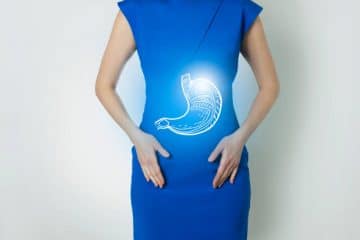Fat Transfer Breast Augmentation Surgery – Introduction
Breast augmentation is one of the most frequently performed plastic surgery procedures in the United States and UK. Breast augmentation is a surgical procedure where the breast size is enhanced; traditionally, implants have been used to enhance the shape and volume of the surgery.
However, there is a growing interest in a more natural approach, autologous fat grafting, that is becoming more popular as the sole treatment modality for breast augmentation.
Increasing evidence has demonstrated an opportunity to achieve a result with good volume retention (fuller, shapelier breasts), high patient satisfaction rates, and low complication rates comparable to implant-based breast augmentation.
In this article, we will review what fat transfer breast augmentation is, the surgical procedure, and explore the benefits, complications, and considerations before undergoing the procedure.
What is Fat Transfer Breast Augmentation Surgery?
References: (1, 2, 3)
Fat transfer is a method used to augment the pre-existing breast volume by obtaining the patient’s fat, refining it, and injecting it into the desired region.
Picking fat from your body is common for breast augmentations and reconstructive breast surgery. This procedure is frequently practiced since harvesting fat tissue is relatively easy, and transplanted tissues result in a natural outcome without your body rejecting the foreign body and having a reaction.
Surgical Technique
Reference: (4)
The surgical technique involves a two-step procedure: liposuction and fat injection. It consists of picking fat from the patient’s donor area, like the abdomen, thighs, or buttocks, and then centrifuging and refining it. This fat is carefully harvested, ensuring minimal trauma to the surrounding tissues.
Then with a cannula, the surgeon accesses the breast, and fat is placed in small aliquots in each withdrawal through small incisions.
The fat is layered into different levels from the chest wall to the skin to achieve a better breast contour.
However, the associated disadvantage is the low rate of fat that stays in the breast after surgery because a lot of the fat is absorbed.
Complications, like fat not having sufficient blood flow and dying or producing calcium deposits, are frequently observed, thus decreasing the rate at which the tissue will start to grow and make healthy fat cells.
Also, substantial fat transplantation is needed to achieve adequately augmented breasts, which is difficult to achieve in some patients.
Preoperative Management
Usually, to prepare for the surgery, breasts are expanded using equipment that applies negative pressure to increase the breast volume before surgery. This preparation is usually done in 1 hour and repeated five times in each breast. However, this depends on the density of the breast.
The elasticity of the breast is evaluated before surgery using the pinch test (pinching the breast above the nipple and measuring the thickness of the breast skin).
Fat Collection
A tumescent solution with a local anesthetic solution is injected into the desired region for fat extraction and extracted using a cannula suction pipe.
Before injection, a small incision is made in the breast, and a cannula is used to transplant the refined fat into the breast in different regions and in small doses to prevent complications. The most frequent places where the fat is injected are the lower region of the muscle in the chest and the region above it. (5)
Postoperative Management
The patient has to return for follow-up after surgery at the frequency the physician believes is best. Also, in the first months, the patient is advised to refrain from smoking, strenuous exercise, and exposure to hot and humid environments (e.g., sauna).
A high-protein diet is recommended to help in the healing process.
Body fat percentage is recorded each visit, and weight changes are measured.
Benefits of Fat Transfer Breast Augmentation Surgery
Reference: (6)
Natural results: A fat transfer breast augmentation is a good choice for people who don’t want to put foreign substances in their bodies. This method provides a natural enhancement by utilizing the patient’s fat cells. Another benefit is that the fat integrates seamlessly into existing tissue so that breasts look and feel natural, unlike an implant breast.
Dual benefits: This procedure offers the advantage of helping reshape the entire body, retrieving fat from places of the body through liposuction, and the enlargement of the breast at the same time, enhancing overall body aesthetics.
Reduced risk of complications: unlike traditional breast implants complication (rupturing, shifting, or collapsing) that can have serious side effects and need corrective procedures, fat transfer breast augmentation does not involve synthetic material and therefore reduces the risk of complications.
Scar minimization: The incisions made during the procedure are typically small and strategically placed. These tiny incisions leave minimal scarring that fades over time, increasing the natural look.
Limitations and Complications of Fat Transfer Breast Augmentation Surgery
Reference: (6, 7)
Augmentation limitation: When doing a fat transfer breast augmentation, there is a limitation in the enlargement of the breast, being only one or two cup sizes larger than the original breasts.
Fat absorption: As we mentioned, a large portion of the fat that is transferred is absorbed by the body, reducing the enhancement
No lifting: Unlike implants, fat does not prevent breasts from sagging from aging, pregnancy, weight loss, or genetics, and because of this natural look, it does not provide the lifted look that implants typically do.
Skill and expertise: The success of fat transfer breast augmentation relies on the surgeon’s skill and experience. Therefore choosing a qualified and board-certified surgeon is crucial for optimal results and minimal complications.
Cost: Because of this dual benefit of getting two procedures done simultaneously, this surgery costs more than the traditional breast implant procedure.
Some complications that may occur after a fat transfer breast augmentation are (2, 6):
- Infection.
- Little deposit of calcium.
- Cavity formation.
- Death of the newly implanted fatty tissue.
- Some of the transferred cells can migrate to other areas.
- Further touch-up injections might be made to maintain the improved shape.
Considerations and Limitations
The use of autologous fat transfer is still controversial because there is a concern regarding its efficacy and safety, mostly about breast cancer risk and detection; this is why this procedure is not standardized. However, there is no evidence that fat grafting increases breast malignancy risk; long-term follow-up studies are required to understand this issue. (8, 9)
Another limitation is that the results vary widely depending on the surgeon’s expertise. Therefore, good results can only sometimes be guaranteed, and costs may vary.
Also, something to consider is that this surgery has a good long-term safety profile and low complication rates. (10)
Frequently asked questions about fat transfer breast augmentation.
How long does it take for a fat transfer breast augmentation to look good?
You should achieve a nice shape after six months or when the swelling subsides. However, every individual can have a different experience, which may vary depending on the lifestyle, body type, and desired goals.
Can the transferred fat be removed?
Yes, like the other fat in your body, it can be removed through liposuction; there may be more difficult places than others, so you should always consult your doctor.
How long does fat-transfer breast augmentation last?
Although some of the fat will be reabsorbed after the surgery, the majority of the fat will remain in the breast tissue and last permanently.
How long does the procedure for fat-transfer breast augmentation last?
This procedure usually takes 4 to 5 hours. However, it can vary depending on the area of the body from where the fat will be harvested.
How much fat is needed for the procedure?
The fat needed to perform this procedure is frequently 200-400 cc. However, this will vary depending on the desired breast size. The surgeon usually takes double what they need because approximately half of it will be reabsorbed.
Conclusions
Fat transfer breast augmentations are a natural alternative to traditional breast implants that are gaining popularity because they enhance the breast while contouring the body. This procedure involves harvesting fat from the patient’s donor areas through liposuction, refining it, and then injecting it into the breast.
With its potential for natural-looking results, dual benefits, reduced risk of complications compared to breast implants, and minimal scarring, it is an excellent option for people seeking subtle and proportionate breast enhancement.
However, it is essential to remember that increased fat transfer is limited and that the body reabsorbs a lot of the fat, with results depending greatly on the surgeon’s experience.
Like every procedure, there can be complications but long-term safety and comorbidity are usually low. However, more research is needed to define the place for fat transfer breast augmentation in esthetic procedures.
Although some concerns exist regarding breast cancer risk and detection, no current evidence suggests an increased risk of malignancy in people that undergo this procedure.
In conclusion, fat transfer breast augmentation offers a more natural approach with satisfactory results. Still, carefully selecting a qualified surgeon and a clear goal is crucial for optimal outcomes.
See Also
Breast Augmentation Before and After
What to Expect After Breast Implant Removal?
How Will Plastic Surgery Impact Your Health?
Questions to ask before opting for plastic surgery
References
- Fardo D, Sequeira Campos M, Pensler JM. Breast Augmentation. 2022 Sep 26. In: StatPearls [Internet]. Treasure Island (FL): StatPearls Publishing; 2023 Jan–. PMID: 29489168. Breast Augmentation – StatPearls – NCBI Bookshelf (nih.gov)
- Connect data. Fat Transfer Breast Augmentation [Internet]. American Society of Plastic Surgery. Available from: https://www.plasticsurgery.org/cosmetic-procedures/fat-transfer-breast-augmentation
- Hodgins N, Murphy J. Breast augmentation using autologous fat grafting optimised by negative pressure wound therapy. JPRAS Open. 2022 Jul 8;33:122-124. doi: 10.1016/j.jpra.2022.06.010. PMID: 35909987; PMCID: PMC9326125. Breast augmentation using autologous fat grafting optimised by negative pressure wound therapy – PMC (nih.gov)
- Shin DJ. Breast Augmentation by Fat Transplantation With Adipose-Derived Stem/Stromal Cells. Aesthet Surg J Open Forum. 2020 Feb 7;2(1):ojaa007. doi: 10.1093/asjof/ojaa007. PMID: 33791627; PMCID: PMC7671271. Breast Augmentation by Fat Transplantation With Adipose-Derived Stem/Stromal Cells – PubMed (nih.gov)
- Kontoes, P., Gounnaris, G. Complications of Fat Transfer for Breast Augmentation. Aesth Plast Surg 41, 1078–1082 (2017). https://doi.org/10.1007/s00266-017-0911-2
- Salibian AA, Frey JD, Bekisz JM, Choi M, Karp NS. Fat Grafting and Breast Augmentation: A Systematic Review of Primary Composite Augmentation. Plast Reconstr Surg Glob Open. 2019 Jul 24;7(7):e2340. doi: 10.1097/GOX.0000000000002340. PMID: 31942362; PMCID: PMC6952123. Fat Grafting and Breast Augmentation: A Systematic Review of Primary Composite Augmentation – PMC (nih.gov)
- Cleveland Clinic. Fat Transfer Breast Augmentation [Internet]. Cleveland Clinic; Last reviewed by a Cleveland Clinic medical professional on 08/18/2022. Available from: https://my.clevelandclinic.org/health/treatments/24033-fat-transfer-breast-augmentation
- D. Leopardi BSc; P. Thavaneswaran BSc (Hons), PhD; K. L. A. Mutimer FRACS; N. A. Olbourne FRACS; G. J. Maddern FRACS, PhD. Autologous fat transfer for breast augmentation: a systematic review. Anz Journal of Surgery, 08 May 2013; Vol 84 (4): 225-230. Autologous fat transfer for breast augmentation: a systematic review – Leopardi – 2014 – ANZ Journal of Surgery – Wiley Online Library
- Al Sufyani, Mohammed A. MD*; Al Hargan, Abdullah H. MD*; Al Shammari, Nayf A.†; Al Sufyani, Mohannad A.†. Autologous Fat Transfer for Breast Augmentation: A Review. Dermatologic Surgery 42(11):p 1235-1242, November 2016. | DOI: 10.1097/DSS.0000000000000791 Autologous Fat Transfer for Breast Augmentation: A Review – PubMed (nih.gov)
- Coleman SR, Saboeiro AP. Fat grafting to the breast revisited: safety and efficacy. Plast Reconstr Surg. 2007 Mar;119(3):775-85; discussion 786-7. doi: 10.1097/01.prs.0000252001.59162.c9. PMID: 17312477. Fat grafting to the breast revisited: safety and efficacy – PubMed (nih.gov)
- Denney BD, Cohn AB, Bosworth JW, Kumbla PA. Revision Breast Augmentation. Semin Plast Surg. 2021 May;35(2):98-109. doi: 10.1055/s-0041-1727272. Epub 2021 Jun 8. PMID: 34121945; PMCID: PMC8186996. Revision Plastic Surgery: Revision Breast Augmentation – PMC (nih.gov)


